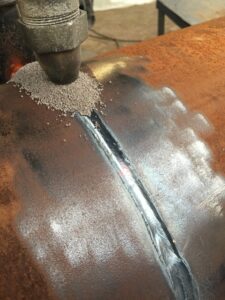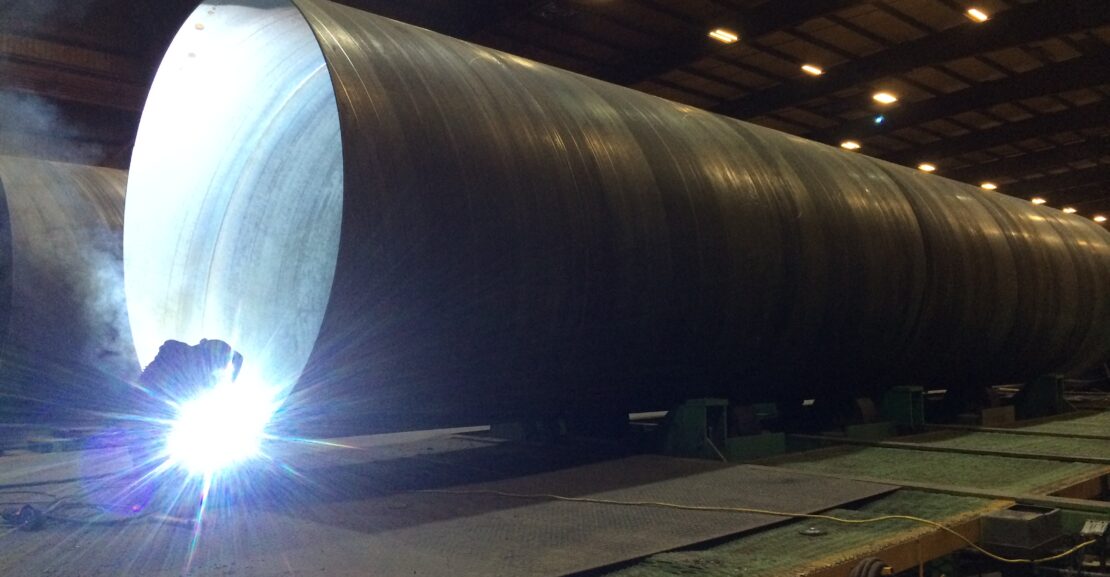Non-destructive weld testing methods are indispensable in the welding industry, providing vital information about the integrity and quality of welds without causing damage to the welded components. These testing techniques play a crucial role in ensuring the safety, reliability, and longevity of welded structures across various industries, including construction, manufacturing, aerospace, and automotive.
Different Non-Destructive Weld Testing Methods
 1. Visual Inspection: Visual inspection is the most basic form of non-destructive testing, involving a thorough visual examination of welds to detect surface discontinuities such as cracks, porosity, and lack of fusion. Weld inspectors rely on visual cues and specialized tools such as magnifying lenses and borescopes to assess weld quality.
1. Visual Inspection: Visual inspection is the most basic form of non-destructive testing, involving a thorough visual examination of welds to detect surface discontinuities such as cracks, porosity, and lack of fusion. Weld inspectors rely on visual cues and specialized tools such as magnifying lenses and borescopes to assess weld quality.
2. Radiographic Testing (RT): Radiographic testing utilizes X-rays or gamma rays to inspect welds for internal defects and discontinuities. This technique produces high-resolution images of the weld area, allowing inspectors to identify defects such as porosity, lack of fusion, and internal cracks.
3. Ultrasonic Testing (UT): Ultrasonic testing involves the use of high-frequency sound waves to inspect welds for internal defects. A transducer emits ultrasonic waves into the weld material, and the reflected waves are analyzed to identify defects such as cracks, inclusions, and bond integrity.
4. Magnetic Particle Testing (MT): Magnetic particle testing is used to detect surface and near-surface defects in ferromagnetic materials. A magnetic field is applied to the weld area, and magnetic particles are applied to the surface. Defects such as cracks and lack of fusion disrupt the magnetic field, causing the particles to accumulate at the defect locations, making them visible under ultraviolet light.
5. Liquid Penetrant Testing (PT): Liquid penetrant testing is a surface inspection method used to detect surface-breaking defects such as cracks, porosity, and lack of fusion. A liquid penetrant is applied to the surface of the weld, and after a specified dwell time, excess penetrant is removed, and a developer is applied to draw out and highlight defects.
Applications of Non-Destructive Weld Testing
Non-destructive weld testing methods find widespread applications in various industries and welding processes, including:
-Construction: Non-destructive testing is essential for ensuring the integrity of welded structural components in buildings, bridges, and other infrastructure projects.
-Manufacturing: Weld testing is critical in manufacturing industries to verify the quality of welded components used in machinery, equipment, and fabricated structures.
-Aerospace: Non-destructive testing is used extensively in the aerospace industry to inspect welds in aircraft components and ensure compliance with stringent quality standards.
-Automotive: Weld testing is essential in the automotive industry to ensure the safety and reliability of welded components in vehicles.
-Oil and Gas: Non-destructive testing is employed in the oil and gas industry to inspect welds in pipelines, pressure vessels, and storage tanks, ensuring their integrity and preventing costly leaks or failures.
Advantages of Non-Destructive Weld Testing
Non-destructive weld testing offers several advantages over destructive testing methods, including:
-Cost-Effectiveness: Non-destructive testing allows for the inspection of welds without damaging the components, reducing the need for costly repairs or replacements.
-Safety: Non-destructive testing minimizes the risk of accidents and injuries associated with destructive testing methods, making it safer for inspectors and workers.
-Efficiency: Non-destructive testing can be performed quickly and efficiently, minimizing downtime and ensuring timely completion of welding projects.
-Quality Assurance: Non-destructive testing provides valuable information about weld quality, helping to ensure that welded components meet industry standards and specifications.
Conclusion
Non-destructive weld testing methods play a crucial role in ensuring the safety, reliability, and quality of welded structures across various industries. By employing a combination of visual inspection, radiographic testing, ultrasonic testing, magnetic particle testing, and liquid penetrant testing, weld inspectors can identify defects and discontinuities in welds, allowing for timely corrective actions and ensuring the integrity of welded components. As technology continues to advance, non-destructive testing methods will remain indispensable tools in the welding industry, helping to maintain the highest standards of quality and safety in welded structures.
Non-Destructive Weld Testing Methods
Non-destructive weld testing methods are vital for ensuring weld integrity without compromising welded components. Techniques like radiographic, ultrasonic, magnetic particle, and liquid penetrant testing offer thorough inspection without damage. With applications spanning construction, manufacturing, aerospace, and more, these methods uphold safety, quality, and reliability in welded structures, making them indispensable across industries.
